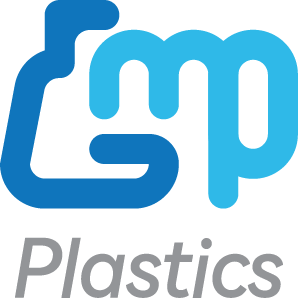Protein production in recombinant cells is a critical technique in biotechnology, allowing for the efficient expression and purification of proteins for therapeutic and research applications. By genetically engineering bacterial or mammalian cells to express target proteins, scientists can produce high yields of biologically active molecules used in drug development, vaccine production, and structural biology.
In this article, we explore the methodologies for recombinant protein production, including plasmid transfection, expression optimization, and purification techniques such as chromatography.
Understanding Recombinant Protein Production
Recombinant protein production involves inserting a gene of interest into a host cell, which then expresses the protein under controlled conditions. The host system can be bacterial, mammalian, yeast, or insect cells, each offering unique advantages and challenges.
Common Expression Systems:
-
Bacterial cells (e.g., Escherichia coli): Fast-growing, cost-effective, high-yield expression system but may lack proper post-translational modifications.
-
Mammalian cells (e.g., HEK293, CHO): Essential for producing proteins with correct folding and post-translational modifications.
-
Yeast (e.g., Pichia pastoris): Capable of post-translational modifications and high-yield secretion.
-
Insect cells (e.g., Sf9, Sf21): Used for complex protein expression using the baculovirus system.
Objective
The goal of this experiment is to express and purify recombinant proteins in bacterial or mammalian cells. This is achieved by transfecting cells with a plasmid encoding the target protein, inducing expression, and purifying the protein using chromatography.
Materials and Methods
1. Plasmid Preparation and Cell Transfection
Materials:
-
Plasmid DNA containing the target gene under a suitable promoter (e.g., T7 for bacteria, CMV for mammalian cells)
-
Competent bacterial cells (e.g., BL21(DE3)) or mammalian cells (e.g., HEK293, CHO)
-
Transfection reagent (e.g., Lipofectamine for mammalian cells, CaCl2 or electroporation for bacteria)
-
Selection antibiotics (e.g., ampicillin, kanamycin, puromycin)
Method:
-
Clone the gene of interest into an expression plasmid with an appropriate tag (e.g., His-tag, FLAG-tag) for purification.
-
Transform bacterial cells using heat shock or electroporation or transfect mammalian cells using Lipofectamine.
-
Incubate cells in antibiotic-containing media to select for successfully transformed or transfected cells.
-
Induce protein expression using IPTG (for bacterial systems) or chemical inducers (for mammalian systems).
2. Protein Expression and Optimization
Materials:
-
Induction agents (e.g., IPTG for bacterial systems, doxycycline for inducible mammalian systems)
-
Optimized growth media (e.g., LB, TB, or chemically defined media for bacteria; DMEM or RPMI for mammalian cells)
-
Incubator with appropriate temperature settings (e.g., 37°C for bacteria, 37°C with 5% CO2 for mammalian cells)
Method:
-
Grow transformed bacterial cells to the desired optical density (e.g., OD600 = 0.6-0.8) before induction.
-
Add IPTG to induce protein expression and incubate for 4-16 hours at an optimized temperature.
-
For mammalian systems, allow 24-72 hours for protein expression post-transfection.
-
Harvest cells by centrifugation and proceed to lysis.
3. Cell Lysis and Protein Extraction
Materials:
-
Lysis buffer (e.g., RIPA buffer, B-PER for bacterial cells, NP-40 for mammalian cells)
-
Sonicator or homogenizer
-
Protease inhibitors (to prevent protein degradation)
-
Centrifuge
Method:
-
Resuspend the harvested cells in an appropriate lysis buffer.
-
Lyse bacterial cells using sonication or enzymatic digestion (e.g., lysozyme).
-
Lyse mammalian cells using detergents like NP-40 or freeze-thaw cycles.
-
Centrifuge at high speed to separate cell debris from the soluble protein fraction.
4. Protein Purification Using Chromatography
Materials:
-
Affinity chromatography resins (e.g., Ni-NTA for His-tagged proteins)
-
Ion exchange chromatography (e.g., DEAE or SP Sepharose)
-
Size exclusion chromatography (e.g., Sephadex G-75)
-
Fast protein liquid chromatography (FPLC) system (optional)
Method:
-
Load the soluble protein extract onto a Ni-NTA affinity column.
-
Wash the column with buffer to remove non-specific proteins.
-
Elute the target protein using imidazole gradient elution.
-
Further purify using ion exchange chromatography for charge-based separation.
-
Use size exclusion chromatography to separate protein monomers from aggregates.
5. Protein Characterization and Validation
Materials:
-
SDS-PAGE and Coomassie staining
-
Western blot with specific antibodies
-
Mass spectrometry (for precise protein identification)
-
ELISA (for quantifying protein expression levels)
Method:
-
Run SDS-PAGE to check protein size and purity.
-
Perform Western blot using specific antibodies to confirm target protein expression.
-
Use mass spectrometry for detailed characterization.
-
Perform ELISA to quantify protein concentration.
Key Considerations for Successful Recombinant Protein Production
-
Expression System Selection: Choose a host based on protein complexity and desired modifications.
-
Codon Optimization: Optimize gene sequences for efficient expression in the host.
-
Protein Folding: Use chaperones or lower temperatures to improve folding in bacterial cells.
-
Yield Optimization: Test different promoters, induction conditions, and media formulations.
-
Purity and Activity: Employ multiple chromatography steps to enhance purity and maintain activity.
Applications of Recombinant Protein Production
-
Biopharmaceuticals: Production of insulin, monoclonal antibodies, and therapeutic enzymes.
-
Vaccine Development: Recombinant proteins serve as antigens in vaccine formulations (e.g., COVID-19 vaccines).
-
Structural Biology: Crystallization of proteins for structural determination.
-
Synthetic Biology: Engineering novel enzymes for industrial and environmental applications.
-
Diagnostics: Development of protein-based assays for disease detection.
Challenges and Future Perspectives
While recombinant protein production is a well-established technique, challenges such as low yields, improper folding, and high production costs persist. Future advancements in synthetic biology, CRISPR-based host optimization, and cell-free expression systems promise to overcome these limitations.





